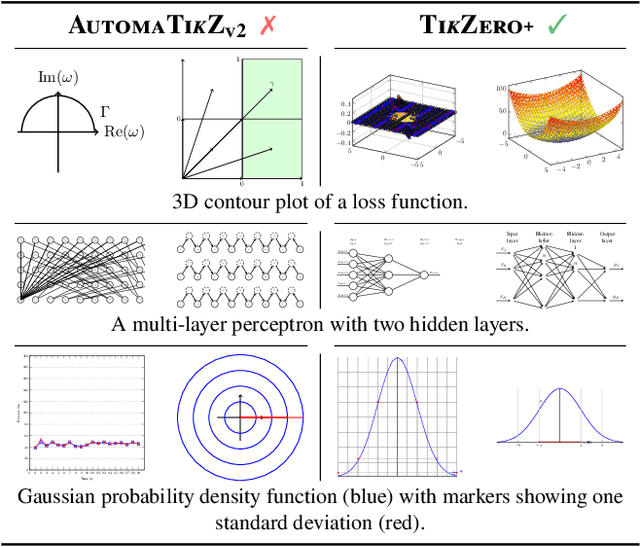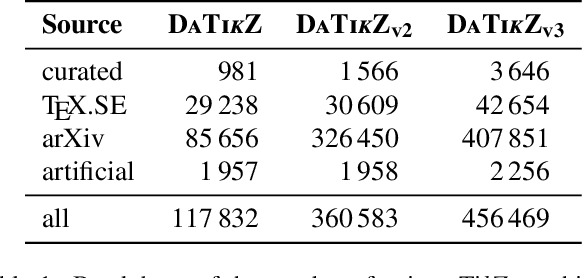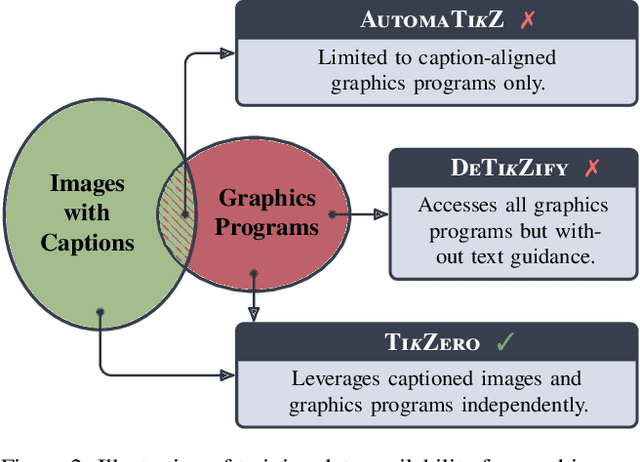Raj Dabre
Nilekani Centre at AI4Bharat, Indian Institute of Technology Madras, India, National Institute of Information and Communications Technology, Kyoto, Japan, Indian Institute of Technology Bombay, India
Mark My Words: A Robust Multilingual Model for Punctuation in Text and Speech Transcripts
Jun 04, 2025



Abstract:Punctuation plays a vital role in structuring meaning, yet current models often struggle to restore it accurately in transcripts of spontaneous speech, especially in the presence of disfluencies such as false starts and backtracking. These limitations hinder the performance of downstream tasks like translation, text to speech, summarization, etc. where sentence boundaries are critical for preserving quality. In this work, we introduce Cadence, a generalist punctuation restoration model adapted from a pretrained large language model. Cadence is designed to handle both clean written text and highly spontaneous spoken transcripts. It surpasses the previous state of the art in performance while expanding support from 14 to all 22 Indian languages and English. We conduct a comprehensive analysis of model behavior across punctuation types and language families, identifying persistent challenges under domain shift and with rare punctuation marks. Our findings demonstrate the efficacy of utilizing pretrained language models for multilingual punctuation restoration and highlight Cadence practical value for low resource NLP pipelines at scale.
CaMMT: Benchmarking Culturally Aware Multimodal Machine Translation
May 30, 2025Abstract:Cultural content poses challenges for machine translation systems due to the differences in conceptualizations between cultures, where language alone may fail to convey sufficient context to capture region-specific meanings. In this work, we investigate whether images can act as cultural context in multimodal translation. We introduce CaMMT, a human-curated benchmark of over 5,800 triples of images along with parallel captions in English and regional languages. Using this dataset, we evaluate five Vision Language Models (VLMs) in text-only and text+image settings. Through automatic and human evaluations, we find that visual context generally improves translation quality, especially in handling Culturally-Specific Items (CSIs), disambiguation, and correct gender usage. By releasing CaMMT, we aim to support broader efforts in building and evaluating multimodal translation systems that are better aligned with cultural nuance and regional variation.
Limited-Resource Adapters Are Regularizers, Not Linguists
May 30, 2025Abstract:Cross-lingual transfer from related high-resource languages is a well-established strategy to enhance low-resource language technologies. Prior work has shown that adapters show promise for, e.g., improving low-resource machine translation (MT). In this work, we investigate an adapter souping method combined with cross-attention fine-tuning of a pre-trained MT model to leverage language transfer for three low-resource Creole languages, which exhibit relatedness to different language groups across distinct linguistic dimensions. Our approach improves performance substantially over baselines. However, we find that linguistic relatedness -- or even a lack thereof -- does not covary meaningfully with adapter performance. Surprisingly, our cross-attention fine-tuning approach appears equally effective with randomly initialized adapters, implying that the benefit of adapters in this setting lies in parameter regularization, and not in meaningful information transfer. We provide analysis supporting this regularization hypothesis. Our findings underscore the reality that neural language processing involves many success factors, and that not all neural methods leverage linguistic knowledge in intuitive ways.
TikZero: Zero-Shot Text-Guided Graphics Program Synthesis
Mar 14, 2025



Abstract:With the rise of generative AI, synthesizing figures from text captions becomes a compelling application. However, achieving high geometric precision and editability requires representing figures as graphics programs in languages like TikZ, and aligned training data (i.e., graphics programs with captions) remains scarce. Meanwhile, large amounts of unaligned graphics programs and captioned raster images are more readily available. We reconcile these disparate data sources by presenting TikZero, which decouples graphics program generation from text understanding by using image representations as an intermediary bridge. It enables independent training on graphics programs and captioned images and allows for zero-shot text-guided graphics program synthesis during inference. We show that our method substantially outperforms baselines that can only operate with caption-aligned graphics programs. Furthermore, when leveraging caption-aligned graphics programs as a complementary training signal, TikZero matches or exceeds the performance of much larger models, including commercial systems like GPT-4o. Our code, datasets, and select models are publicly available.
IteRABRe: Iterative Recovery-Aided Block Reduction
Mar 08, 2025Abstract:Large Language Models (LLMs) have grown increasingly expensive to deploy, driving the need for effective model compression techniques. While block pruning offers a straightforward approach to reducing model size, existing methods often struggle to maintain performance or require substantial computational resources for recovery. We present IteRABRe, a simple yet effective iterative pruning method that achieves superior compression results while requiring minimal computational resources. Using only 2.5M tokens for recovery, our method outperforms baseline approaches by ~3% on average when compressing the Llama3.1-8B and Qwen2.5-7B models. IteRABRe demonstrates particular strength in the preservation of linguistic capabilities, showing an improvement 5% over the baselines in language-related tasks. Our analysis reveals distinct pruning characteristics between these models, while also demonstrating preservation of multilingual capabilities.
RomanLens: Latent Romanization and its role in Multilinguality in LLMs
Feb 11, 2025Abstract:Large Language Models (LLMs) exhibit remarkable multilingual generalization despite being predominantly trained on English-centric corpora. A fundamental question arises: how do LLMs achieve such robust multilingual capabilities? For non-Latin script languages, we investigate the role of romanization - the representation of non-Latin scripts using Latin characters - as a bridge in multilingual processing. Using mechanistic interpretability techniques, we analyze next-token generation and find that intermediate layers frequently represent target words in romanized form before transitioning to native script, a phenomenon we term Latent Romanization. Further, through activation patching experiments, we demonstrate that LLMs encode semantic concepts similarly across native and romanized scripts, suggesting a shared underlying representation. Additionally in translation towards non Latin languages, our findings reveal that when the target language is in romanized form, its representations emerge earlier in the model's layers compared to native script. These insights contribute to a deeper understanding of multilingual representation in LLMs and highlight the implicit role of romanization in facilitating language transfer. Our work provides new directions for potentially improving multilingual language modeling and interpretability.
Are Language Models Agnostic to Linguistically Grounded Perturbations? A Case Study of Indic Languages
Dec 14, 2024



Abstract:Pre-trained language models (PLMs) are known to be susceptible to perturbations to the input text, but existing works do not explicitly focus on linguistically grounded attacks, which are subtle and more prevalent in nature. In this paper, we study whether PLMs are agnostic to linguistically grounded attacks or not. To this end, we offer the first study addressing this, investigating different Indic languages and various downstream tasks. Our findings reveal that although PLMs are susceptible to linguistic perturbations, when compared to non-linguistic attacks, PLMs exhibit a slightly lower susceptibility to linguistic attacks. This highlights that even constrained attacks are effective. Moreover, we investigate the implications of these outcomes across a range of languages, encompassing diverse language families and different scripts.
Pralekha: An Indic Document Alignment Evaluation Benchmark
Nov 28, 2024



Abstract:Mining parallel document pairs poses a significant challenge because existing sentence embedding models often have limited context windows, preventing them from effectively capturing document-level information. Another overlooked issue is the lack of concrete evaluation benchmarks comprising high-quality parallel document pairs for assessing document-level mining approaches, particularly for Indic languages. In this study, we introduce Pralekha, a large-scale benchmark for document-level alignment evaluation. Pralekha includes over 2 million documents, with a 1:2 ratio of unaligned to aligned pairs, covering 11 Indic languages and English. Using Pralekha, we evaluate various document-level mining approaches across three dimensions: the embedding models, the granularity levels, and the alignment algorithm. To address the challenge of aligning documents using sentence and chunk-level alignments, we propose a novel scoring method, Document Alignment Coefficient (DAC). DAC demonstrates substantial improvements over baseline pooling approaches, particularly in noisy scenarios, achieving average gains of 20-30% in precision and 15-20% in F1 score. These results highlight DAC's effectiveness in parallel document mining for Indic languages.
BhasaAnuvaad: A Speech Translation Dataset for 14 Indian Languages
Nov 07, 2024



Abstract:Automatic Speech Translation (AST) datasets for Indian languages remain critically scarce, with public resources covering fewer than 10 of the 22 official languages. This scarcity has resulted in AST systems for Indian languages lagging far behind those available for high-resource languages like English. In this paper, we first evaluate the performance of widely-used AST systems on Indian languages, identifying notable performance gaps and challenges. Our findings show that while these systems perform adequately on read speech, they struggle significantly with spontaneous speech, including disfluencies like pauses and hesitations. Additionally, there is a striking absence of systems capable of accurately translating colloquial and informal language, a key aspect of everyday communication. To this end, we introduce BhasaAnuvaad, the largest publicly available dataset for AST involving 14 scheduled Indian languages spanning over 44,400 hours and 17M text segments. BhasaAnuvaad contains data for English speech to Indic text, as well as Indic speech to English text. This dataset comprises three key categories: (1) Curated datasets from existing resources, (2) Large-scale web mining, and (3) Synthetic data generation. By offering this diverse and expansive dataset, we aim to bridge the resource gap and promote advancements in AST for low-resource Indian languages, especially in handling spontaneous and informal speech patterns.
Cross-Lingual Auto Evaluation for Assessing Multilingual LLMs
Oct 17, 2024Abstract:Evaluating machine-generated text remains a significant challenge in NLP, especially for non-English languages. Current methodologies, including automated metrics, human assessments, and LLM-based evaluations, predominantly focus on English, revealing a significant gap in multilingual evaluation frameworks. We introduce the Cross Lingual Auto Evaluation (CIA) Suite, an extensible framework that includes evaluator LLMs (Hercule) and a novel test set (Recon) specifically designed for multilingual evaluation. Our test set features 500 human-annotated instructions spanning various task capabilities along with human judgment scores across six languages. This would enable benchmarking of general-purpose multilingual LLMs and facilitate meta-evaluation of Evaluator LLMs. The proposed model, Hercule, is a cross-lingual evaluation model that addresses the scarcity of reference answers in the target language by learning to assign scores to responses based on easily available reference answers in English. Our experiments demonstrate that Hercule aligns more closely with human judgments compared to proprietary models, demonstrating the effectiveness of such cross-lingual evaluation in low resource scenarios. Further, it is also effective in zero-shot evaluation on unseen languages. This study is the first comprehensive examination of cross-lingual evaluation using LLMs, presenting a scalable and effective approach for multilingual assessment. All code, datasets, and models will be publicly available to enable further research in this important area.
 Add to Chrome
Add to Chrome Add to Firefox
Add to Firefox Add to Edge
Add to Edge